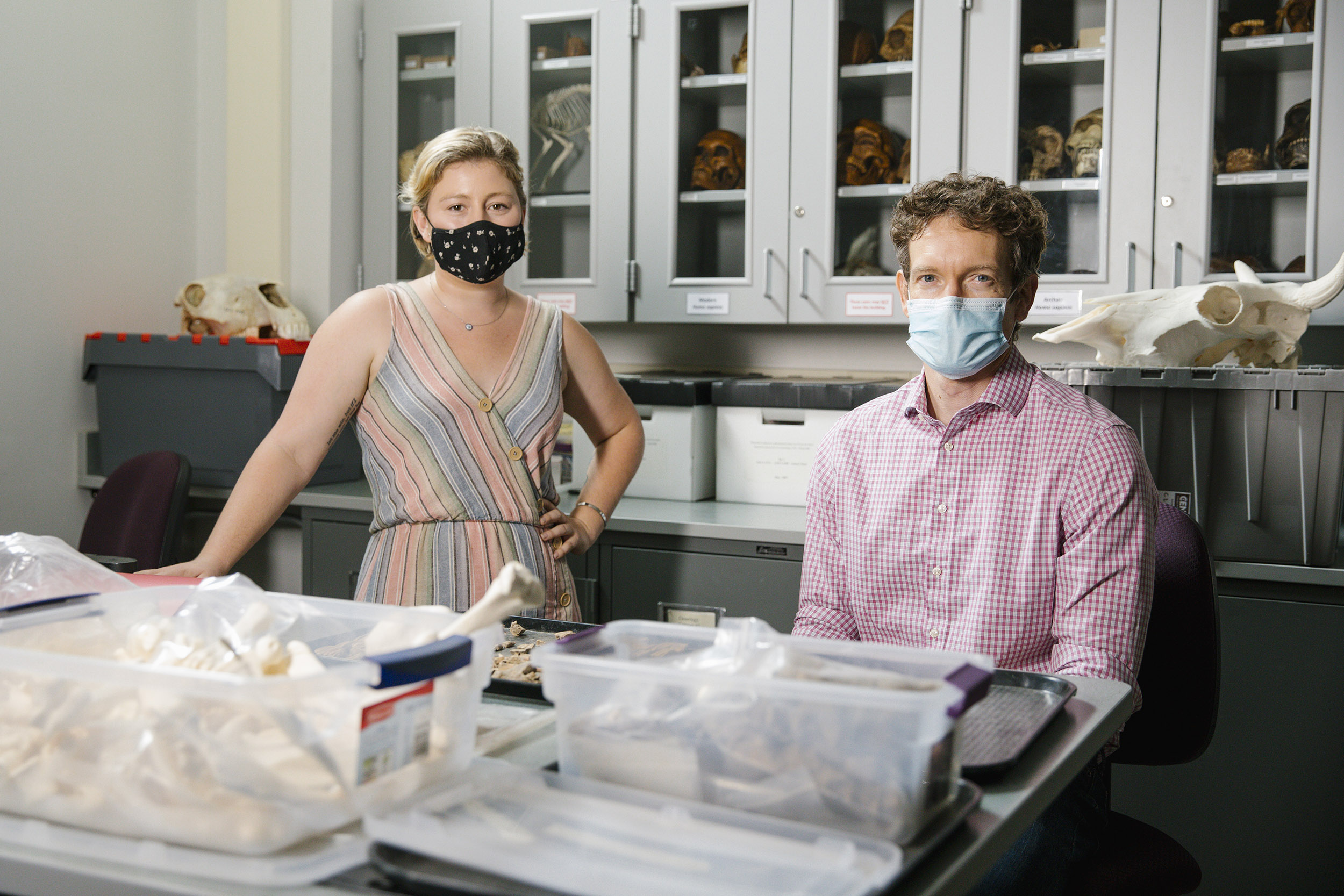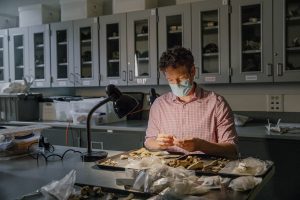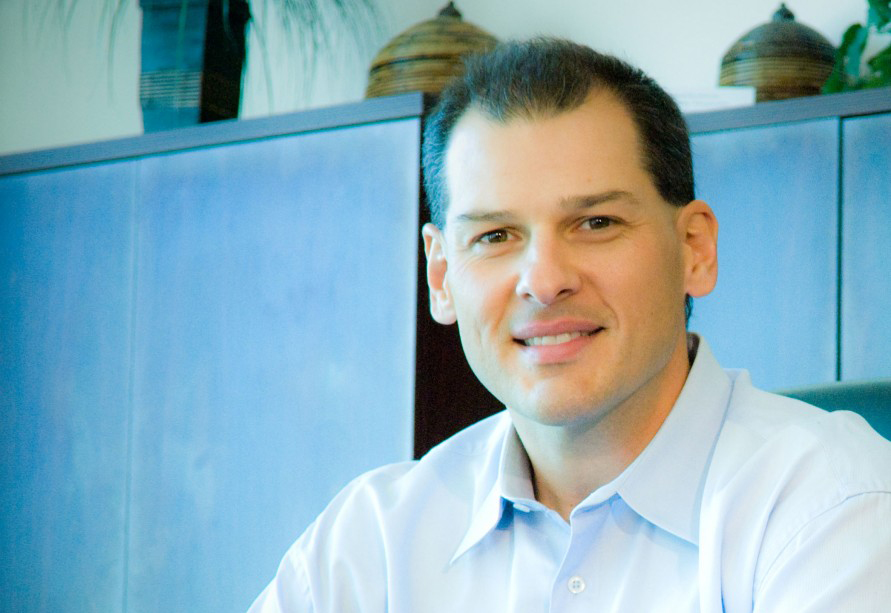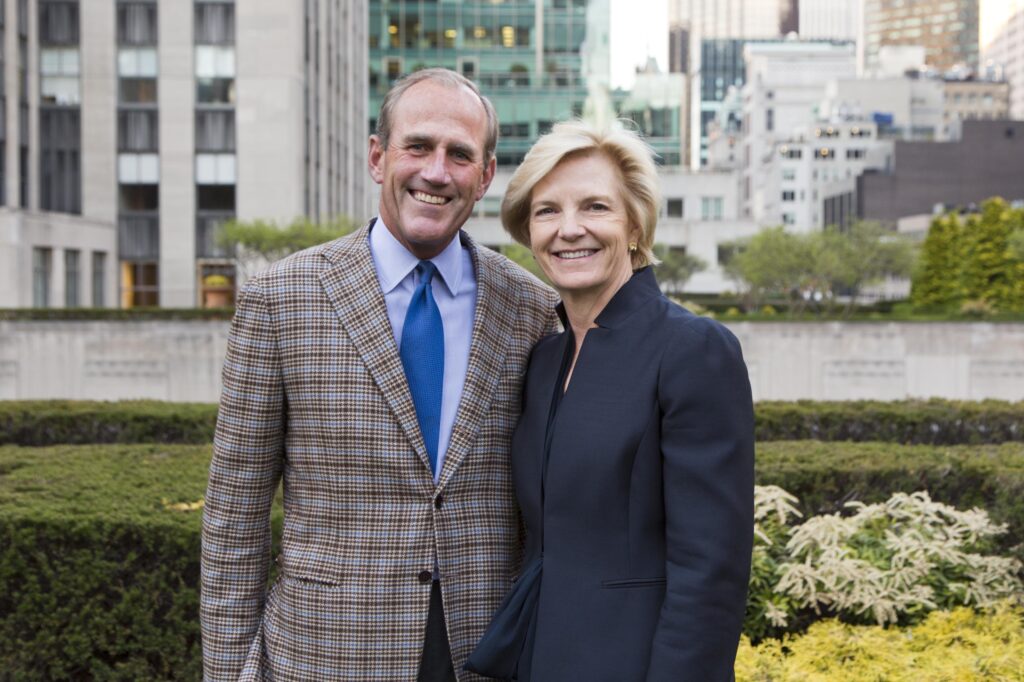Analyzing Ancient Animal Remains
June 17, 2021

From left, graduate student Christine Mikeska and associate professor of anthropology Benjamin Arbuckle. (photo by Jeyhoun Allebaugh)
From around the 14th century B.C., the steady buzz of everyday urban life reverberated within the city walls of ancient Hattusa, the Bronze Age capital of the Hittite Empire in modern-day Turkey. Craftspeople fashioned clothing and jewelry for elites, cattle moved goods through narrow streets, and worshippers visited temples for religious ceremonies.
Though not exactly like the hustle and bustle of modern-day cities, the flow of industry and commerce would be recognizable to residents of today’s world. So, too, would many of the challenges that come with city life.
“Urbanism has been around for 5,000 years, and people have been dealing with the same problems we are faced with,” said Benjamin Arbuckle, associate professor in the department of anthropology in UNC’s College of Arts and Sciences. “Disease, crowds, conflict and policing, it’s not new. We can look at solutions from the past that have worked or not worked.”
Arbuckle and Carolina graduate student Christine Mikeska are examining remains of animal teeth excavated from two Bronze Age cities – Hattusa and Tell Bderi – to explore fundamental questions about how these early urban centers supported populations of several thousand people. How far did trading networks for livestock reach? How were economies structured? How centralized was control of staple goods? How did cities achieve stable food production?
By conducting biochemical analysis of dental remains and comparing that with geological samples of surrounding areas, researchers can pinpoint where animals were born and raised. This analysis can reveal insights about trade, economy and culture. Examination of lions’ teeth found within Hattusa, for example, shows that cubs were raised inside the city walls, likely by royals and rulers who wanted to project wealth and strength.

Mikeska and Arbuckle’s research is being conducted in collaboration with Germany’s Eberhard Karls University of Tübingen, a strategic partner of UNC-Chapel Hill. One of the oldest universities in Europe and recognized by the German Federal Ministry of Education and Research as a University of Excellence, Tübingen is one of five strategic partnerships Carolina has developed with institutions around the world to facilitate faculty and student exchanges, joint research and shared institutional resources.
“I am particularly interested in understanding social networks and interactions between different groups of people,” Mikeska said. “A lot of scholarship sort of assumes the state controls everything, but lots of groups and communities created their own ways of getting by or getting things they needed. People are not monolithic, and we can understand our own urban centers better if we acknowledge that.”
Consider the example of sheep and pigs. Rulers kept a tight grip on the trade of sheep, which were prized for their wool. But pigs were hard to transport and, perhaps mindful of cultural taboos around consumption of pork, city rulers wouldn’t have deigned to meddle in this particular market. But there’s evidence that many Hattusians raised pigs and the trade of swine products, such as lard, would have operated outside the state-controlled economy.
Mikeska and Arbuckle operate in a subfield of archaeology called zooarchaeology, which examines remains of animals to shed light on ancient life. Tübingen’s world-renowned archaeology program has sponsored excavations in the Middle East for decades. Carolina’s partnership with Tübingen helps give Mikeska and Arbuckle access to a vast assemblage of remains from sites in modern-day Turkey and Syria. The materials are shipped from Germany to Chapel Hill, where the lab analysis is conducted, allowing the partners to continue their research collaboration even while international travel was severely restricted because of the pandemic.
“Tübingen has great faculty and extensive collections from this part of the world, so it’s a natural partnership for us,” Arbuckle said. Mikeska and Arbuckle have partnered with Tübingen zooarchaeology researcher Britt Starkovich on the project.
Many of the dental samples Mikeska and Arbuckle have analyzed show animals that were raised in or near the city, but a few samples have come from much farther afield. Their findings will help shape understanding of the reach and strength of the Hittite Empire as well as the basic functioning of cities as humans first encountered the benefits and challenges of urban life.
“We can document on a map the social networks, the economic networks in one of the earliest human experiments of living in a city,” Arbuckle said. “We can see how smart people figured out solutions, and we can examine that in the context of our own urban planning. People have been living this way for a really long time, and we can learn from the techniques and methods that supported them.”
Arbuckle’s research received funding from a Global Partnership Award through the Chancellor’s Global Education Fund. Learn more about how the fund supports Carolina’s global priorities.



